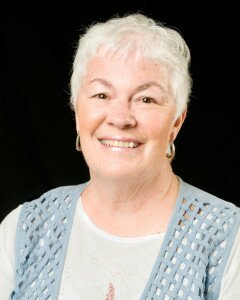Then & Now By Judy Salamacha ~
A traditional Thanksgiving celebration in America will be unique for most of the international foreign exchange students attending Morro Bay and Coast Union high schools in 2015-16.

For decades, the Estero Bay Women’s Club has hosted the visiting students at a monthly meeting to learn more about their cultures.
Program Chairwoman, Pat Moon, invited the students to enjoy a bountiful potluck feast prepared by the members before the students provided comments about their homelands. The 15 students were thankful to be enjoying America’s lifestyle, education and freedoms.
Beyond their accents, some more pronounced than others, these students are not much different than their American high school peers. Teen years are meant to test out, even risk, new adventures and independent thinking.
And while the foreign exchange students may be far away from their comfort zone of family and homeland, they are not unique in trying to discover their place — trying to fit into the new structure they have ventured out to test.
They must bond with their new American families, make new friends among their exchange group peers and at their new schools, and adapt to a different education system.
As they discussed what their schooling was like in their countries, it became apparent that the U.S. was offering life choices they were not used to making at home. They relished the opportunities to choose their classes, and the freedom to explore activities in clubs and sports beyond their school curriculum.
For example, the five students from Germany explained they attended four years of elementary school then eight years of schooling similar to an American high school, but their career options were pre-determined by the educational system. A student attends either a school to learn a trade or studies a liberal arts education.
In China, students go to school from 7 a.m. to 10 p.m. five days a week and on Saturday they have a half-day of study hall. Learning English begins in elementary school and sporting activities appear to be a career choice. Student athletes will spend half the day in school and half in training.
The two students from Brazil indicated they had no choice in their curriculum, which included 11-13 classes per semester. All classes were similar to the “advance placement” classes in America.
The five students from Italy explained their schools met from 8 a.m. to 1 p.m. and focused on specialty learning, for example, learning languages. Team sports were not available in schools and something their parents would need to pay extra for if they participated.
In Denmark, students would typically attend the same school with the same students and the same teachers for 10 years, and then they graduate to a “gymnasium” similar to our community colleges. The “gymnasium” prepares students to take the exit exam, which determines if they qualify for higher education. But all education is free, as is Denmark’s health care.
Some of the students were enjoying their second exchange year in America. Many of them hoped to return for college, mentioning the California universities in Santa Barbara, San Diego, and San Francisco or New York University as preferred choices.
And what were they grateful for thus far? They appreciated the generosity of their host families and the acceptance and friendships offered at their schools. Participating in team sports like basketball and volleyball were treasured experiences they would not have had the opportunity to enjoy at home.
Morro Bay and Cambria offered them access and views of the ocean they would not soon forget. Some students developed a passion for surfing while another admitted a compulsion for golfing.
Travel will continue to be a future quest for most of these students. They mentioned that the bright lights of Las Vegas, the uniqueness of San Francisco, and the beauty of Santa Barbara and Lake Tahoe, will always be fond memories.
Meeting these students, one couldn’t help but realize the world gets smaller when talking to people from other countries and discovering they are actually just like you, but with a few cultural differences.
Indeed, discovering our likenesses and understanding our differences builds bridges to appreciating our humanness.
Hmmm! Might investing in a cultural exchange tour be considered a mandatory peace mission for all future youth? Maybe the United Nations might agenda this concept for discussion at a future meeting?
Judy Salamacha’s Then & Now column is special to Tolosa Press. Reach her at: [email protected] or call 801-1422.
